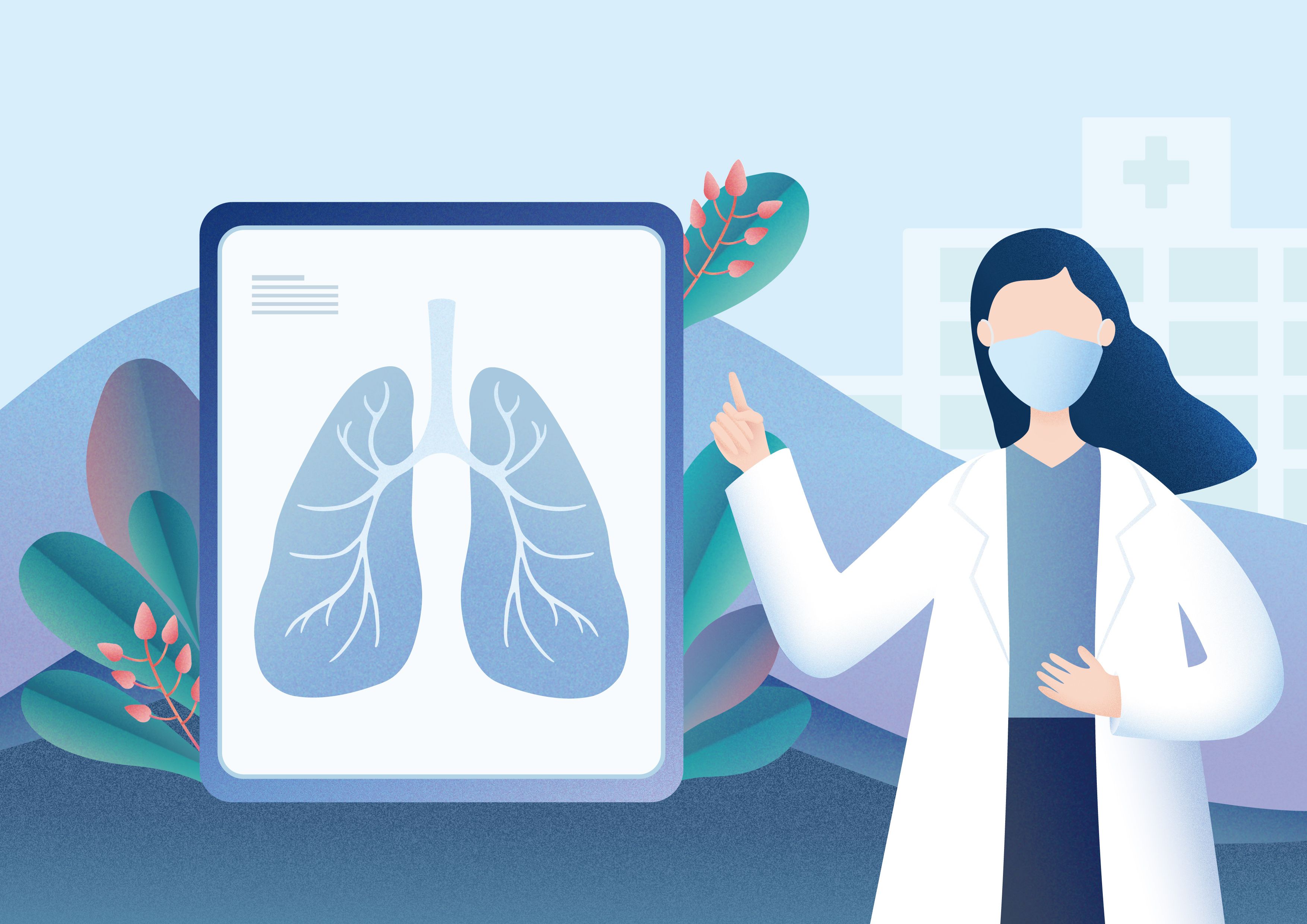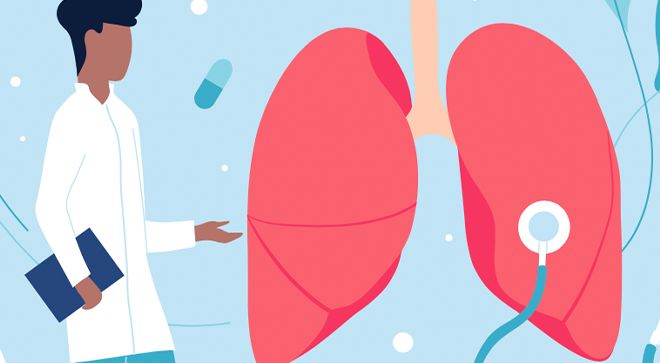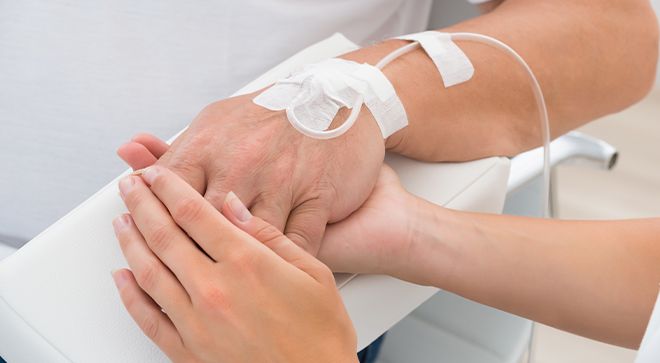Video
Delivering a Lung Cancer Diagnosis as a Physician
Transcript: Philippa Cheetham, M.D.: Dr. Kim, welcome back to Cure Connections®. We’ve covered a lot of material already talking about the diagnosis of different types of lung cancers, how we evaluate patients with imaging, and of course, how important the biopsy is. When that patient is in front of you, obviously before they receive the tissue diagnosis, there’s probably a high index of suspicion that they may well have lung cancer. Suspicious lesions may be seen on chest X-ray or CT [computed tomography] scans, and the conversation may have already been had based on the imaging appearance that this looks highly suspicious, and it’s almost certainly a lung cancer.
But the moment that diagnosis is confirmed for a patient, and we look our patients in the eye and say, “Yes, this is confirmed cancer,” it still comes as a huge shock for patients, even those patients who are expecting the diagnosis. We also know that so many patients hear so little of what we tell them in that first consultation. How do you deliver the news of the biopsy and deliver the news of what they need to remember on day one?
Edward Kim, M.D., FACP: It’s never an easy discussion. I think really what’s important is it’s not about the physician at that point. This is the patient’s information, and it’s our job as health care providers to make sure we transmit that information in an effective and efficient manner, just as you’re saying.
It really depends. I see patients who sometimes can handle stress better than others; usually those are the Type As [personalities]. They have their notebooks out and their pencils, and they’re jotting everything down and they’ve got the recorder.
Philippa Cheetham, M.D.: I know the type.
Edward Kim, M.D., FACP: You know that they’ve got a handle. Now there might be some realization later, but they know what they have to do. Or if they have a spouse who is a Type A with them or a friend, that’s always a good situation. If you have somebody who is a little more fragile and maybe was hoping for the best despite all the odds, because somebody still wins the lottery….
Philippa Cheetham, M.D.: Right.
Edward Kim, M.D., FACP: It hasn’t been me but somebody always wins, you see it on TV, then I think you have to be cautious about how you deliver the information, which is very clear and frank. But more importantly on what are the next steps, and make sure they hear it. You might have to repeat it several times. I’ve even had one patient who I said, “I want you to absorb this, you’re not ready to hear what the next part of the journey is. I want you to come back in a few days.” And they have my email so if they’re ready in a day, then they can come back in a day. But it is very important, too, for a patient especially to absorb the diagnosis and its impact, and then more importantly be able to turn that next page and get centered on what our treatment is, what our goals of treatment are, what are the things they have to worry about. Because right now they’re worrying about their friends, their kids, their pets, or their houses, their, you know.
Philippa Cheetham, M.D.: And job, right.
Edward Kim, M.D., FACP: Their car and their jobs, everything is going through their mind, and it’s not just that they heard “lung cancer,” it’s everything else. And so I get it. It’s a very stressful situation.
Philippa Cheetham, M.D.: The good news is one of the reasons we’re doing this segment is that there are so many potential new treatments available, new therapies, potential to be enrolled in a clinical trial. And we have our own tick-box that we want to address, you know, the diagnosis, the biopsy results, treatment — this treatment, that treatment — follow-up, surveillance. And in the end it’s just too much information. Do you try and focus on one thing up front, like maybe the next step, the treatments you’ve already talked about? Or do you find that patients really want to know the long term, you know, “Am I going to die? What’s the long-term outlook for me?”
Edward Kim, M.D., FACP: I try to contextualize everything. I think you’ve noticed that during our interview. When they say, “Am I going to die,” I say, “Well, yes, we all are, and I haven’t met someone yet who has been able to skirt that, although there may be some fountain of youth or something out there, but that’s not in our hands. That’s at a higher power, and certainly that’s not something I can determine.”
What I can help determine and be their guide, be someone who helps lead them down a path, and try and give them the best chance for success, is to outline what the next steps are. And many times patients will want to hear that before the diagnosis.
Philippa Cheetham, M.D.: Right.
Edward Kim, M.D., FACP: They will ask you about chemotherapy or radiation. Invariably someone always asks at the last minute, “Well can we cut this out in surgery?” And I have to explain the reasons why we can’t at later stages. But they want to hear about these things. We say radiation like anything. To them radiation could be anything from a cellphone, to a CT scan, to what is radiation for a cancer treatment. And so it’s important if you’re going to answer those types of questions, make sure they fully understand what that means. And many of my patients will want to hear before.
Philippa Cheetham, M.D.: It amazes me the number of patients who still don’t even know the difference between radiation and chemotherapy. We take it for granted doing that all day every day. At lots of cancer clinics now, the doctor will work alongside maybe an oncology nurse practitioner, or other members of the team, that when we deliver the news and may be seeing 20, 30 patients in a busy clinic, they can actually sit down, give the patients time to explain things with them. Do you work in the clinic with anybody else to deliver that information?
Edward Kim, M.D., FACP: You want a team. I mentioned a quarterback before, but if the quarterback has no one to hand the ball off to, or throw, or someone’s blocking for them, and I’m using football as an analogy, I don’t know why I choose football, but it’s important to have that team. I work with pharmacists. We have nurse practitioners or ACPs [advanced care providers]. We have chemotherapy teaching nurses as well. And so we have navigators.
It requires every one of these folks, social workers, patient advocates, to make sure that every little bit, even filling out those darn insurance forms and the job forms, as you mentioned, to make sure they understand what the schedule is for chemotherapy. Then the question of, well what happens on that day for infusion? I know I have an appointment here and this shouldn’t be like the dentist; it shouldn’t be just a guessing game. So a lot of that education is very important. And giving somebody sheets of paper to read about is not that helpful but it really requires some explanation and the logistics. Remember, these Type A folks, they want to know, “OK, I’m coming in, what happens next? An IV [intravenous drip] is placed, then what?” Then the nurse comes in, takes your vitals, then we measure some things and then we get the pharmacy to mix the drugs. Then this gets hung first. And then this gets hung second. “How long am I in there for? What do I do when I go home, this stuff’s in my body now?” So these are the types of questions that are really important for patients to understand.
Philippa Cheetham, M.D.: Right. I think patients also are seeing that if they don't understand, that somehow maybe they're stupid, they haven't grasped what we're telling them. It's a very intimidating environment, and yet I say to patients, if you don’t understand what I‘m telling you, I’m the one who’s failed, and there should be no shame to ask again or ask for it to be explained in a different way or just to hear it a second time.
Transcript Edited for Clarity




